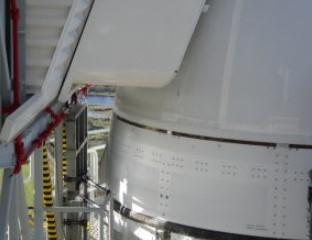NASA engineers began loading liquid hydrogen and liquid oxygen rocket propellants into the Space Launch System Tuesday afternoon for the third Artemis I moon mission launch attempt early Wednesday.
Artemis Launch Director Charlie Blackwell-Thompson gave the go-ahead for fueling shortly after 3 p.m. EST. She told 93 NASA engineers earlier Tuesday that preparations were ready for a launch attempt, indicating so with a knock on a wooden table, according to Derrol Nail, NASA communications.
Propellant loading had caused some problems in the prior two launch attempts that were eventually scrapped, and NASA took an unusual step on Tuesday of loading both hydrogen and oxygen at the same time to allow up to six hours for a slowed-down load-in of liquid hydrogen. Engineers called it a “kinder-gentler” loading operation.
Weather conditions are deemed 80% favorable for a two-hour launch window starting at 1:04 a.m. EST Wednesday Nov.16, NASA reported Tuesday afternoon. The primary concern is the potential for thick clouds. Depending on how thick the cloud cover is at launch could factor in a decision to scrub or go ahead. Thick clouds can produce moisture that could deter a launch.
NASA’s official launch commentary will be carried live on NASA TV starting at 10:30 p.m. EST Tuesday.
The first launch attempt of the SLS rocket and Orion spacecraft was scrubbed on Aug. 29, with a second attempt scrubbed on Sept. 3, both due to technical problems. Hurricane Ian forced engineers to move the 322-foot rocket back to a Vehicle Assembly Building before returning it to pad 39B at the Kennedy Space Center in Florida. Afterwards, Hurricane Nicole delayed by two days an earlier scheduled launch of Nov. 14, but crews kept the rocket and spacecraft in place on the pad.
An inspection of the rocket and spacecraft after it endured wind and rain from Nicole showed an area where caulk on a seam had detached during the storm. Mission management leaders determined there was a low likelihood if more caulk material tears off at launch that it would pose a critical risk to the flight.

In an earlier space flight era, loose heat tiles on Apollo shuttle craft were blamed for explosions of both the Challenger and Columbia missions in 1986 and 2003, respectively.
Artemis I is an uncrewed mission that will proceed around the Moon and return to Earth to lay the groundwork for later missions in 2004 and 2005, with a planned lunar landing in 2005 to feature the first woman and first person of color on the Moon. Learnings from these earlier missions are intended to help NASA and foreign and private sector partners plan for later missions to Mars.
RELATED: Artemis I launch delayed two days for Nicole, bearing down on Florida
A launch on Wednesday with a trip around the moon would bring SLS and the Orion spacecraft back to Earth with a splashdown in the Pacific Ocean on Sunday Dec. 11.